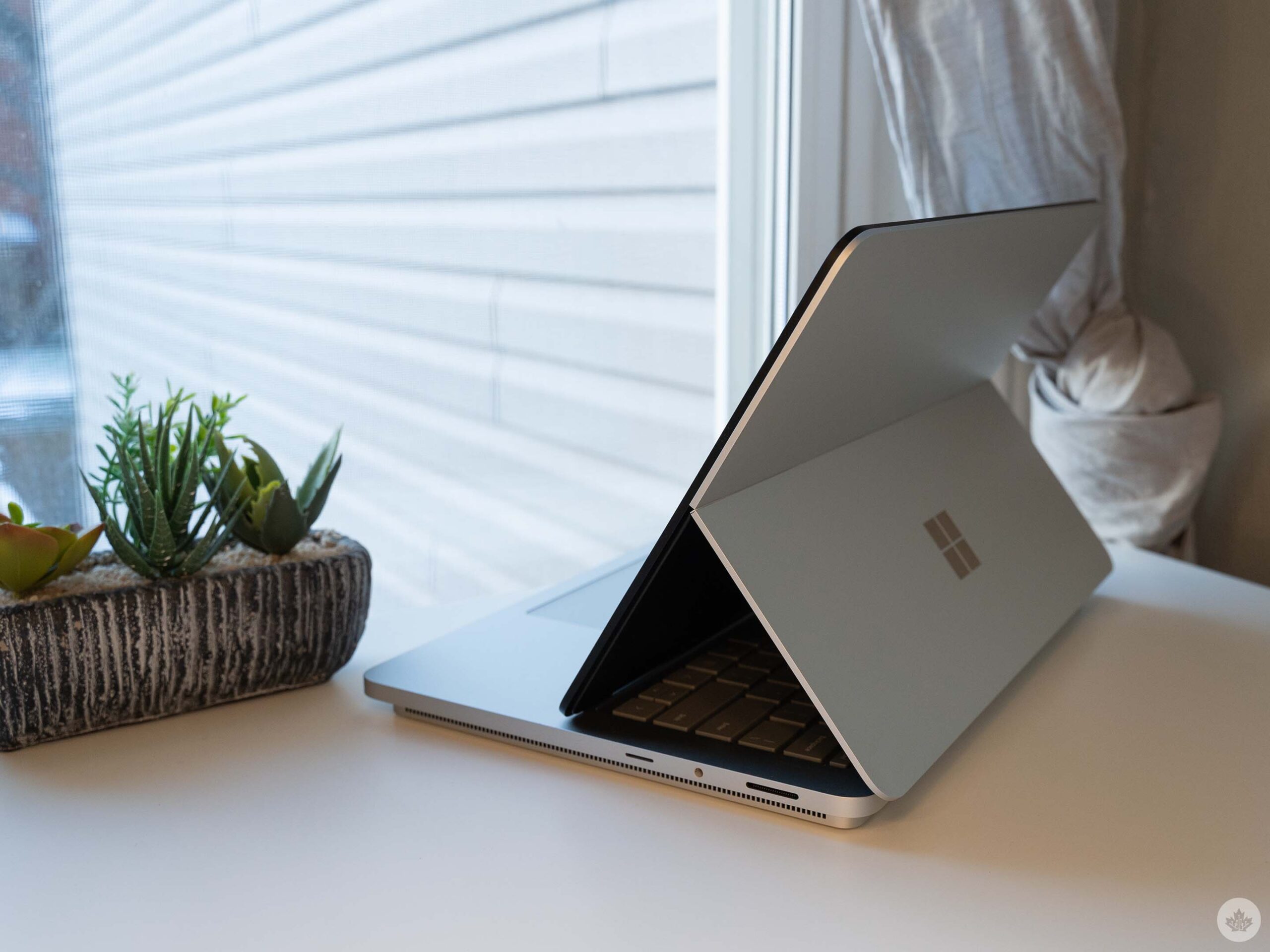
The Pros
- Upgraded internals
- Better performance
- Good build quality
The Cons
- Mediocre battery life
- Weird design
- Loud fans and heat
I reviewed the first Surface Laptop Studio (SLS) back in 2021 and walked away confused about what the device aimed to accomplish. Unfortunately, the Surface Laptop Studio 2 maintains that confusion and supplements it with better internals. Sure, the SLS2 is faster than the original SLS, but beyond that, it’s just as bizarre a device that remains tough to recommend.
Specs
- Display: 14.4-inch PixelSense Flow display, 2400 x 1600 pixel resolution, 120Hz refresh rate, 3:2 aspect ratio
- Processor: 13th Gen Intel Core i7-13700H with Intel Gen3 Movidius 3700VC VPU AI Accelerator
- Memory: 64GB
- Storage: 1TB SSD
- Dimensions: 232 x 230 x 22mm
- Weight: 1.98kg
- Camera: Full HD front-facing ‘Studio’ camera with wide field of view
- Operating System: Windows 11
- Battery: Microsoft claims up to 18 hours of battery life on this model
- Connectivity: Wi-Fi 6E, Bluetooth 5.3
- Sensors: Auto-brightness, accelerometer, gyroscope
- Ports: 2x USB-C with USB4/Thunderbolt 4, 1x USB-A 3.1, 1x microSD reader, 3.5mm headphone jack, Surface Connect port
- Graphics: Nvidia GeForce RTX 4060 Laptop GPU with 8GB vRAM
Note: The above specs pertain to the specific SLS2 model I tested. You can view all spec configurations here.
(Cr)hinge
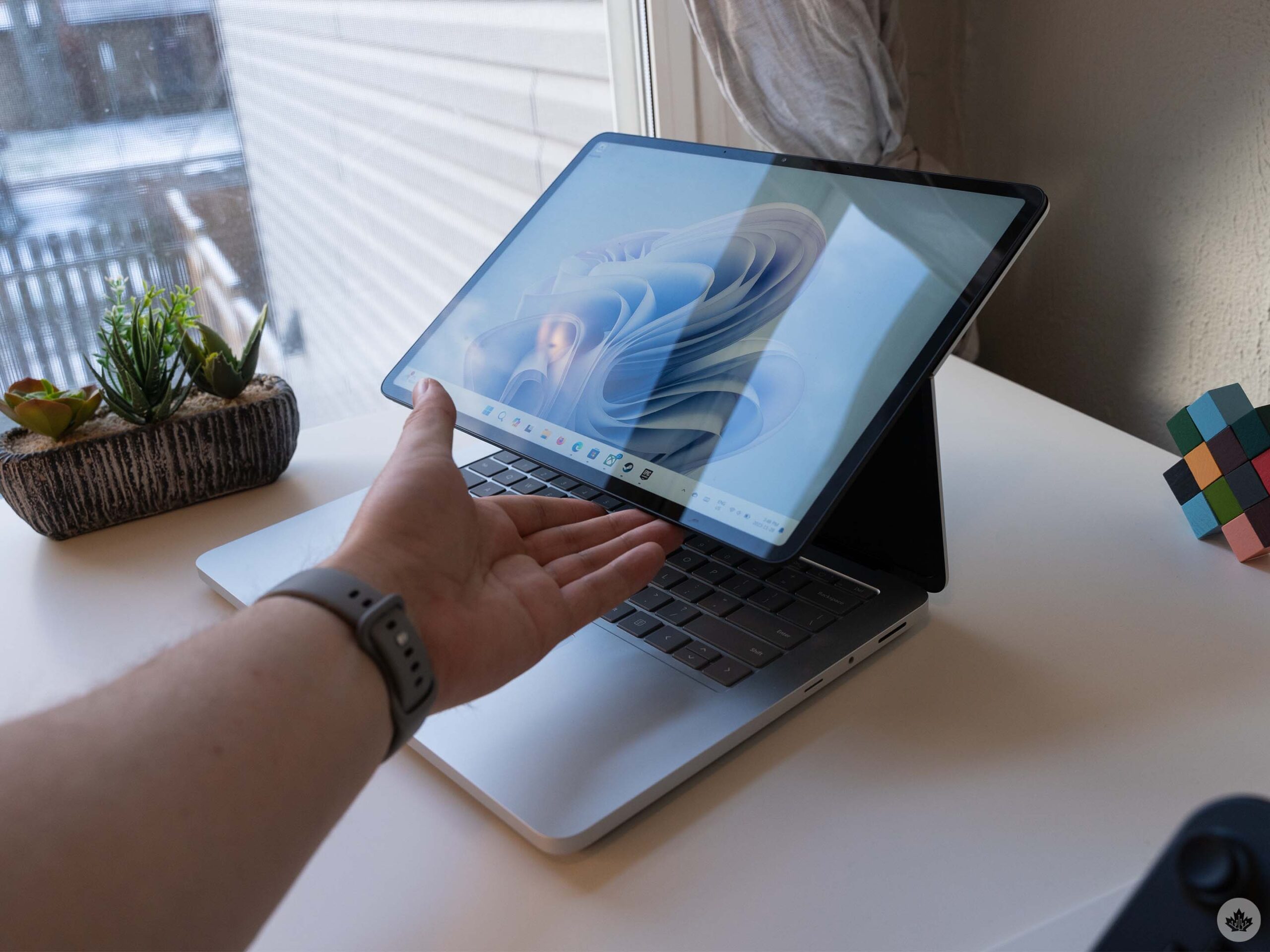 In typical Microsoft fashion, the company did not significantly alter the external hardware with the SLS2. In a side-by-side comparison, the only real way to tell the two laptops apart is by looking at the ports – the SLS2 is blessed with a USB-A port on one side and a microSD card slot on the other, expanding availability connectivity beyond the meagre 2x USB-C ports, headphone jack, and Surface Connect port available on the original SLS.
In typical Microsoft fashion, the company did not significantly alter the external hardware with the SLS2. In a side-by-side comparison, the only real way to tell the two laptops apart is by looking at the ports – the SLS2 is blessed with a USB-A port on one side and a microSD card slot on the other, expanding availability connectivity beyond the meagre 2x USB-C ports, headphone jack, and Surface Connect port available on the original SLS.
Beyond that, it’s the same anodized aluminum, MacBook-esque shell in the same ‘Platinum’ colour with the same plinth/pedestal/base or whatever you want to call it. This isn’t much of a surprise, as Microsoft tends to pick and stick with a design. In the past, the company has at least offered a new colourway or something, but not so with the SLS2.
The issue isn’t that Microsoft reused a design, however. It’s that the company stuck with this design in particular. The unique hinge is as impressive as last year while also being just as useless outside of niche scenarios, like laying the screen flat while using the stylus. That’s great if you’re an artist or graphic designer, but that’s about it. Unlike the Surface Book or Surface Pro lines, which allow you to fully detach the display from the keyboard for a better tablet experience, the SLS2 display doesn’t come off. That means it’s far too heavy to enjoy as a tablet.
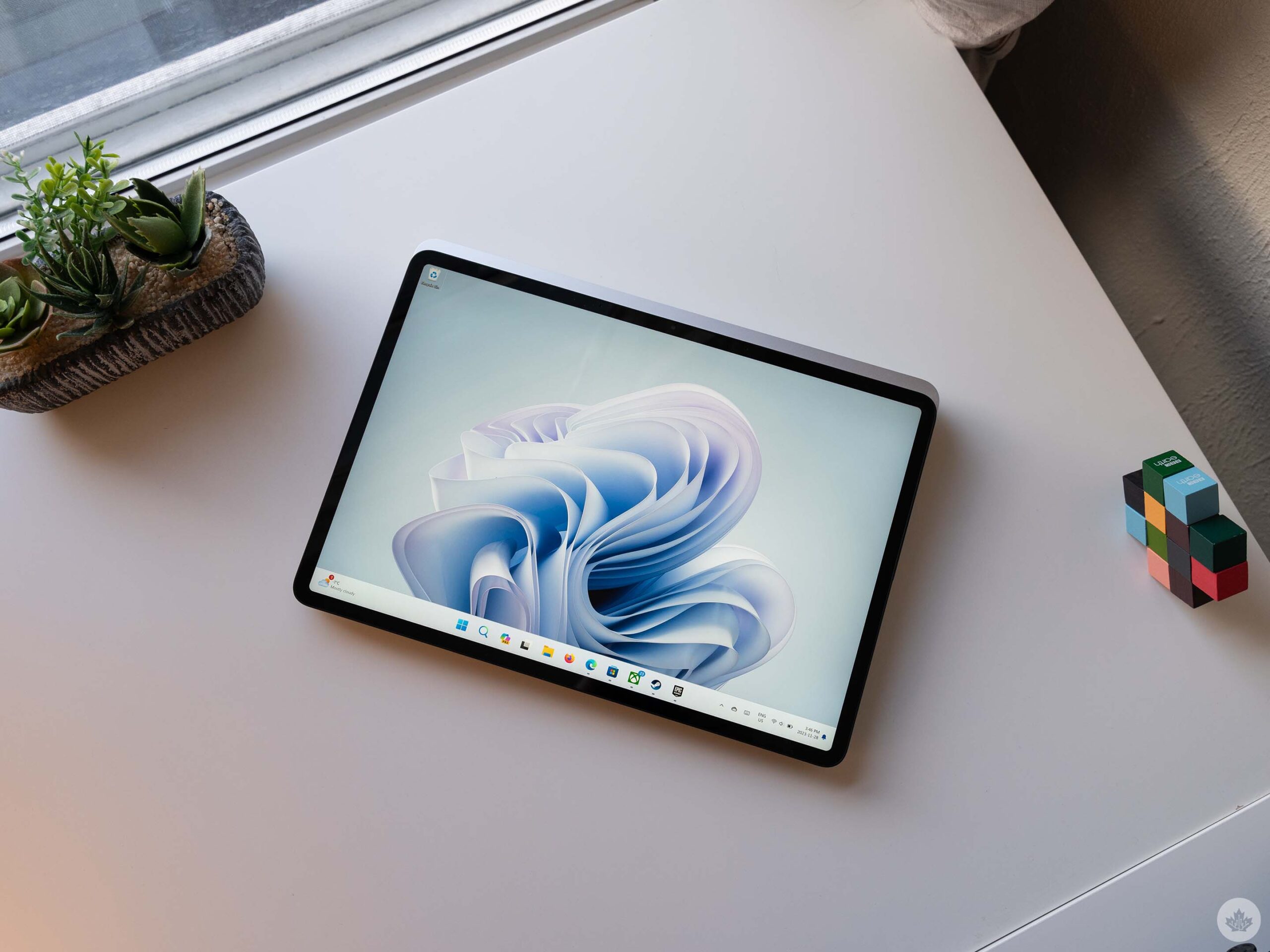
The SLS2 in its awkward tablet mode.
There’s also the ‘tent’ mode that covers the keyboard but leaves the trackpad exposed. As I explained with the original SLS, this mode is basically useless because you can’t adjust the angle of the display at all.
So, like with the original SLS, I used the SLS2 exclusively in laptop mode. I only converted it into tablet mode twice to make it marginally easier to digitally sign a document, and that was it.
Naturally, my use case will differ from others, but whatever your needs, I’d only recommend the SLS2 to someone who will make good use of the tablet mode (and even then, if you don’t need the beefy specs, the Surface Pro offers a better overall tablet experience).
Flex that muscle
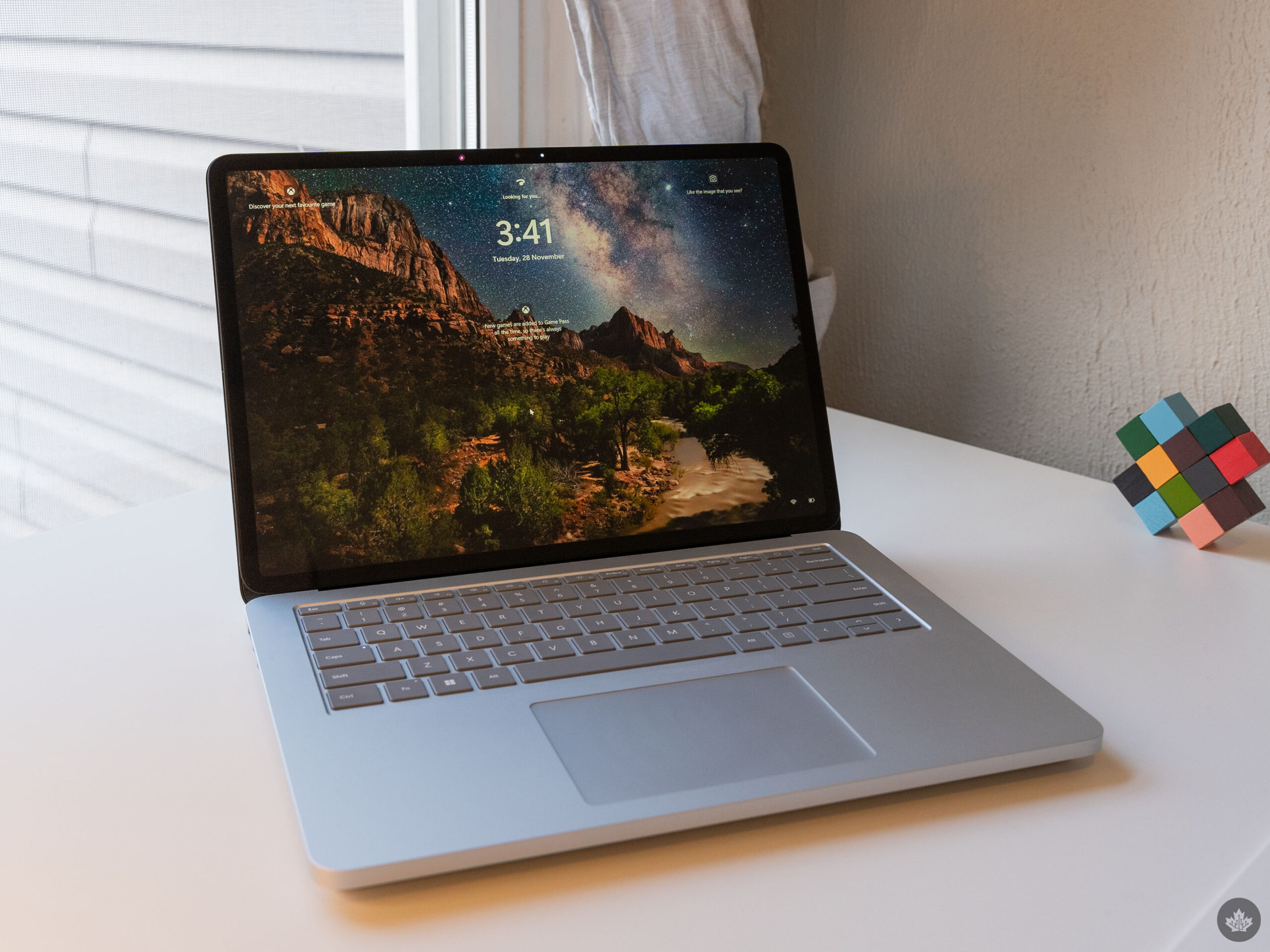 Pretty much across the board, the SLS2 has improved internals over the original SLS. The SLS2 sports a 13th Gen Intel Core i7, but there is no i5 option this year. It can also be configured with Intel Iris Xe or Nvidia RTX 4050, 4060 or 2000 graphics, up to 64GB of RAM, and 2TB of storage. This all makes for a fairly powerful (and power-hungry) laptop.
Pretty much across the board, the SLS2 has improved internals over the original SLS. The SLS2 sports a 13th Gen Intel Core i7, but there is no i5 option this year. It can also be configured with Intel Iris Xe or Nvidia RTX 4050, 4060 or 2000 graphics, up to 64GB of RAM, and 2TB of storage. This all makes for a fairly powerful (and power-hungry) laptop.
In my testing, the Surface Laptop Studio 2 handled everything I threw at it. On the work side, I mostly rely on a web browser, Slack and Photoshop. For the web browser, both Firefox and Microsoft’s Edge browser were snappy fast and handled tons of open tabs, though I ended up using Edge more because I found the SLS2 battery life was worse with Firefox. To be frank, the SLS2 battery isn’t great with Edge either, but every extra minute I can glean counts for something. Photoshop also ran great and handled with ease.
Shifting to benchmarks, we’ve got the numbers from a variety of tests down below. Unsurprisingly, the SLS2 came in behind Apple’s M3 Max MacBook Pro and M3 28-inch iMac, though it was only slightly behind the M3. Unfortunately, I can’t really compare the SLS2 and SLS benchmarks because many of the tests have changed, and I don’t have an SLS to retest. That said, the SLS2 did score quite a bit better on Cinebench R23 than the SLS did, at 11,112 for multi and 1,680 for single, compared to 6,232 and 1,483, respectively.
The SLS2 also beats the SLS in both Heaven (107fps to 69fps) and GFXBench (180fps to 111.92).
While benchmarks don't always tell the full story, I will say that the SLS2's performance, while better than its predecessor, isn't quite what I'd expect for something that costs as much as the SLS2 does. It's a common theme for Microsoft's products, but I'll say it again: if you care about performance, you can get much better value for your dollar elsewhere.
But can it game?
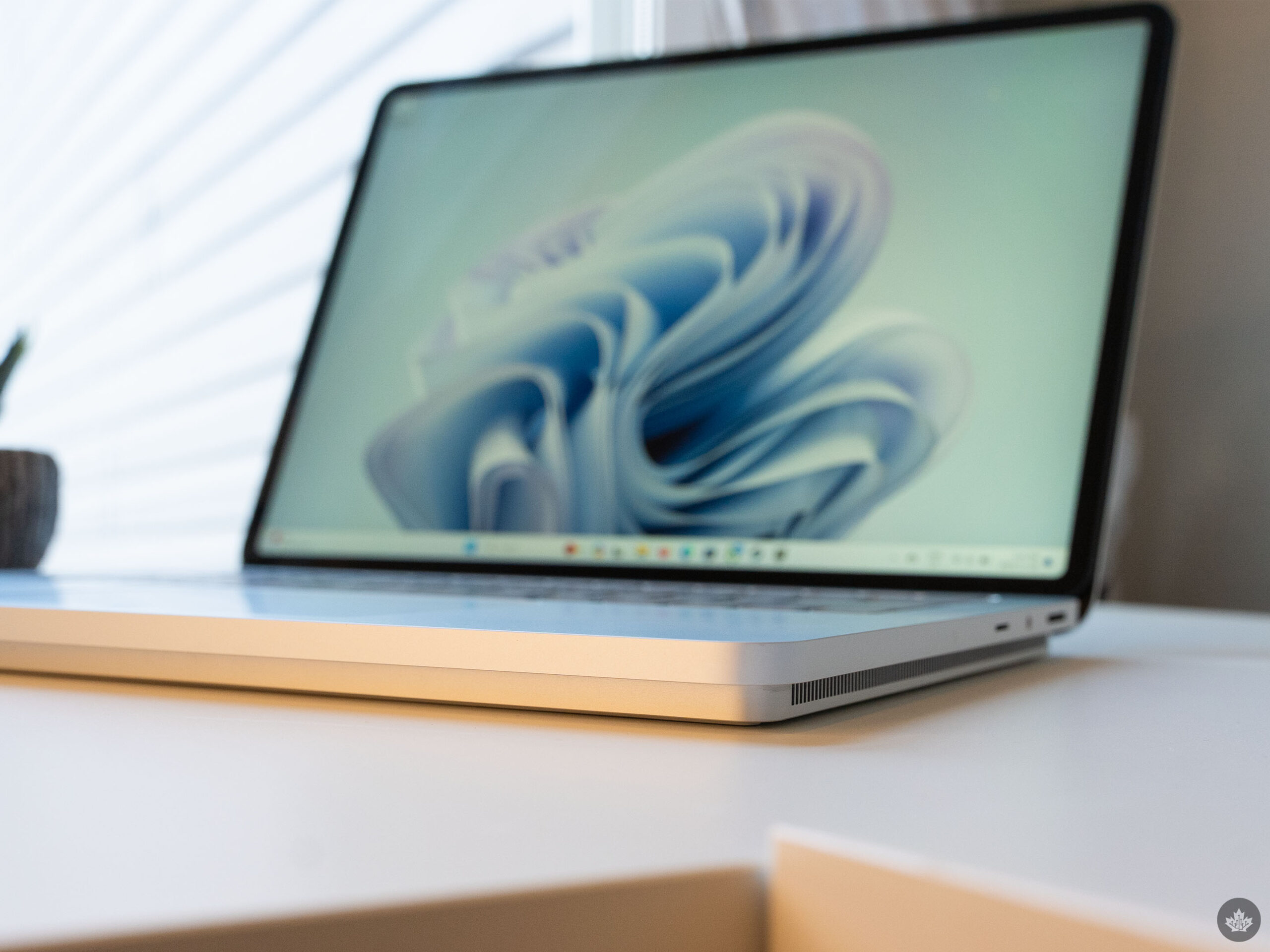
Behold, the plinth.
Before moving on from performance, it’s worth talking about gaming on the Surface Laptop Studio 2. In short, you can game on it, but I wouldn’t recommend buying it for gaming. For one, the SLS2 is, first and foremost, a productivity device that fills that role well. I suppose if someone were looking primarily for a productivity device that can flex into an entertainment role on weekends, the SLS2 could meet that need.
The bigger issue, in my eyes, is the cost. The SLS2 isn’t cheap, and to get better specs, that price increases fairly rapidly from the base $2,699.99 CAD. For one, to get a model with a discrete GPU, you’re looking at $3,099.99. However, if you’re serious about gaming, you’ll want more storage – to get 1TB, you’re at $3,499.99 minimum. And at that point, it’s worth noting you can get a gaming laptop with better specs for less than $2,000 CAD. Granted, that gaming laptop might not be able to flip the display around like the SLS2, but if it were my money, I’d rather save that $1,500 difference than have a mostly useless tablet mode.
All that said, it’s worth looking at some numbers and chatting about the experience. On paper and in benchmarks, I found the SLS2 to be a fairly capable gaming machine. I mostly play Destiny 2 in my spare time, and the SLS2 handled it fairly well, though it is an older title.
That said, the SLS2 gets very hot after even a short stint of gaming, and I often find that around 45-60 minutes into a gaming session, the SLS2 is uncomfortably hot on the palm rest. The heat was definitely concerning, though the palm rest issue could be avoided by plugging in a keyboard or using a controller. Moreover, the SLS2's cooling system would ramp up aggressively, with the fans often spooling up within minutes of launching a title. I found the fans to be rather loud and, thanks to the position of the vents, the hot air would blow out either side of the laptop, blasting my right hand with hot air, which wasn't my favourite sensation.
In benchmarks, the SLS2 put up decent numbers, but again, it did so with jet-engine fans and lots of heat.
Surely they could have put more battery in this thing
 While performance was all around pretty decent, the SLS2 suffers from similar problems to many other Windows laptops when you want to use it on the go – you know, the main purpose of a laptop. Interestingly, the SLS2’s power options include a ‘Recommended’ mode followed by ‘Better performance’ and ‘Best performance,’ with no efficiency or battery mode listed apart from the official battery saver mode that kicks in at low power.
While performance was all around pretty decent, the SLS2 suffers from similar problems to many other Windows laptops when you want to use it on the go – you know, the main purpose of a laptop. Interestingly, the SLS2’s power options include a ‘Recommended’ mode followed by ‘Better performance’ and ‘Best performance,’ with no efficiency or battery mode listed apart from the official battery saver mode that kicks in at low power.
In my time with the SLS2, I typically kept it set to best performance while plugged in and recommended while unplugged in an attempt to extend the meagre battery life as much as I could. You can see from the below Geekbench 6 scores how much of a performance hit you take while unplugged and running in recommended mode compared to being plugged in with best performance enabled.
Ultimately, I think most people with the SLS2 will want to save their heaviest workloads for when there’s an outlet nearby. Trying to run anything that will push your SLS2 will result in rapidly declining battery life and subpar performance compared to when the device is plugged in.
That said, the SLS2 can get more longevity with lighter workloads. For example, I could comfortably get through half to three-quarters of my typical eight-hour workday on a single charge, at least on days when I didn’t need to break out Photoshop.
What disappoints me most is that the SLS2 is not a thin or light laptop by any means, especially with the extra height added by the plinth. Because of the size, I feel like Microsoft should be able to add more battery to the SLS2 and improve the situation. But maybe we’ll have to wait for the SLS3 for that.
Still not convinced
With all of that said, I remain unconvinced by the Surface Laptop Studio 2. As with the original SLS, I think there’s niche appeal to this particular laptop, but beyond that niche, it’s tough to recommend. For almost every use case, I can think of a better PC, a more affordable laptop, or both.
That said, few PCs will match the SLS2’s excellent build quality or offer as unique a hinge mechanism for contorting the display into a tablet mode. I do think the SLS2 is worth a premium for those features, but not as much as it currently costs (and again, only for users in the niche audience the SLS2 aims for).
In Canada, the SLS2 starts at $2,699.99. The SLS2 model I tested costs $4,539.99. You can purchase the SLS2 through Microsoft or other retailers, like Best Buy.
MobileSyrup utilizes affiliate partnerships. These partnerships do not influence our editorial content, though we may earn a commission on purchases made via these links, helping fund the journalism provided free on our website.
There’s niche appeal to this particular laptop, but beyond that niche, it’s tough to recommend.
MobileSyrup may earn a commission from purchases made via our links, which helps fund the journalism we provide free on our website. These links do not influence our editorial content. Support us here.

